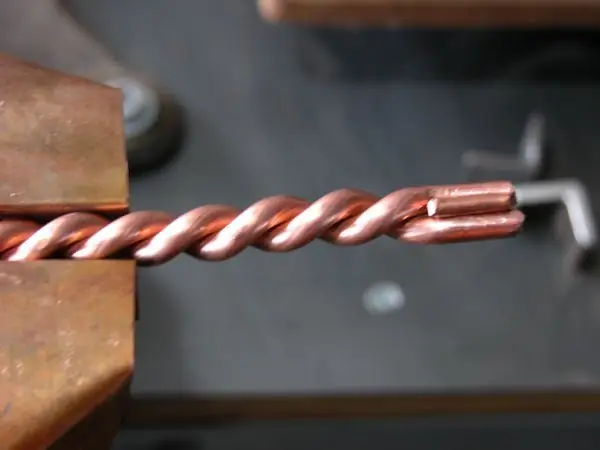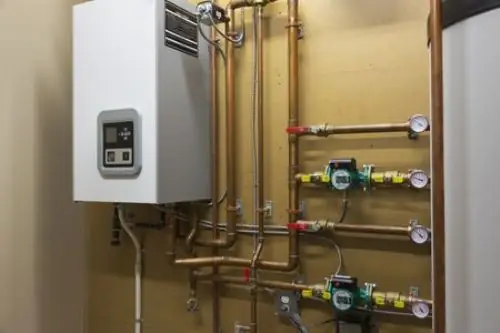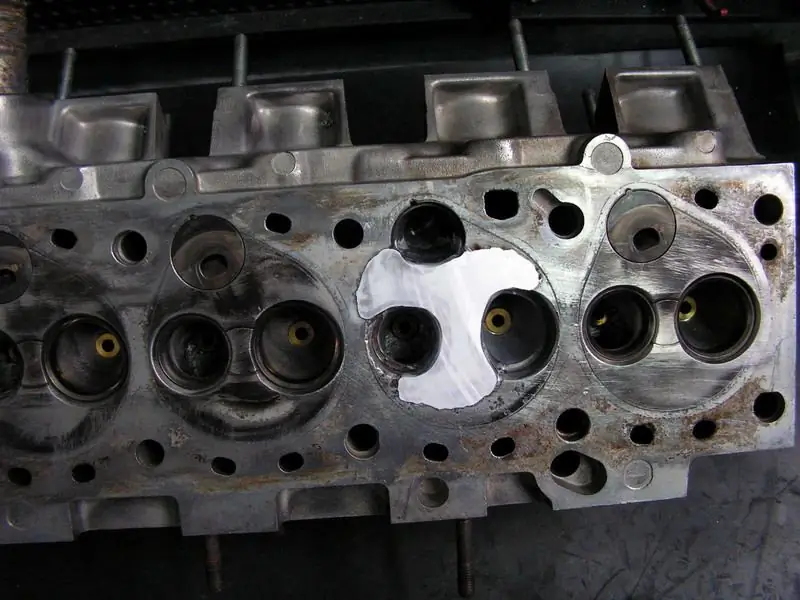2026 Author: Howard Calhoun | [email protected]. Last modified: 2025-01-24 13:10:45
When performing the wiring of the introductory electrical panel, home craftsmen without the necessary experience often do not know in what sequence the elements of protective automation are connected. Such gaps in knowledge can lead to unfortunate consequences during operation. This is especially true for the inclusion of protective shutdown devices in the circuit. If everything is simpler with AVDT, then the question of where to install the RCD (before or after the machine) requires a detailed review. In today's article, we will consider how to perform such an installation, as well as the sequence of location of the home electrical network protection elements.
The principle of operation of the RCD and its difference from the differential machine
The need to install a residual current device has not been disputed by professional electricians for a long time, but errors in its connection are inherent even in some of them. This device serves to protect a person from electric shock in the event of an accident.leakage as a result of insulation breakdown or excessive dampness and requires a well-mounted grounding. When connecting the RCD, 2 wires (at 220 V) or 4 (at 380 V) are used. The resulting current leakage creates a potential difference on the coils of the device, which leads to a cutoff.

However, such a device has one significant disadvantage - it is not able to detect an overload in the network or a short circuit, which can lead to its failure without removing the voltage. That is why an RCD requires additional protection, unlike a residual current circuit breaker (RCBO).
The essence of the work of protective elements in the complex
In order to understand where to put the RCD (before or after the machine), the novice home master needs to study how his work will be done. For example, it is worth taking the simplest assembly, in which there is a metering device, a residual current device, circuit breakers with output to only one power line. In this case, the voltage that came from the transformer substation, passing through the meter and the RCD, must get to the outlet. However, if there is no protection and a short circuit occurs, the residual current device burns out.
But a release is also needed in front of the meter, which means that installing an RCD after the introductory machine will be the right decision. It turns out that protection is needed on both sides. However, such a two-pole machine is installed before the electricity meter. There is no need to install it directly in front of the residual current device, but they are necessary on the segment from the RCD to the consumer. However, such ABs will differ from the input ones in various parameters, which should be taken into account separately.

Which machines to install after the RCD
Quite often, novice home masters have a question about how the introductory ABs differ from those that are installed after the residual current device. The following criteria can be distinguished here:
- maximum current load (on the introductory machine it is higher);
- number of poles (2 or 1);
- main purpose.
The introductory machine (with the correct switching of the rest of the protection) is very rarely used for its intended purpose. Most often, the rest of the electrical panel equipment works earlier. It is mainly used for general shutdown of the home network during repair work. Its rated current load is higher than that of other elements. Two-pole AB are used as inputs, through which both phase and neutral wires pass.
The value of the machines after the RCD is below. This parameter is calculated depending on the planned load on a particular line. However, it should be understood that it should not exceed the same indicator of the residual current device. The main task of a linear single-pole circuit breaker is to cut off the group if an overload or short circuit occurs on it before the RCD fails.

Exemplary switching circuit using one residual current device
The location of automation in the introductory electrical panel may vary. Usually one residual current device is sufficient for all outgoing groups. But even if several similar elements are used, the question "to install an RCD before or after the machine" is incorrect - installation is required on both sides. It is worth considering the sequence in which the elements will be located.
- Introductory two-pole automatic or feeder circuit breaker.
- Electricity meter.
- Residual current device.
- One or more machines, depending on the number of lines.
Quite often, home craftsmen play it safe and install an additional AB between the electricity meter and the RCD, but if all the calculations are made correctly, this element is completely useless.
Assembly for several residual current devices
This option is applicable if it is necessary to separately protect household appliances installed in wet rooms (washing machine, boiler). In this case, the RCD, mounted on a separate line, should have lower performance than the main one. Often, additional residual current devices are installed directly near the protected equipment, outside the switch cabinet. But here, too, the experience of switching the input shield should be taken into account. The answer to the question of where to put the RCD (before the machine or after) will besame.

The most rational for such protection of individual equipment would be the acquisition of a compact RCBO. Such devices are plugged into a regular outlet and are capable of withstanding current up to 16A, which is quite enough to operate a dishwasher or washing machine. In addition, they do not require any skills and abilities in the field of electrical installation.
Important! It is possible to connect an RCD after the machine without its additional protection, however, it should be understood that in this case the AB rating must exceed the same indicator of the residual current device by a step. In this case, even if a short circuit occurs, nothing extraordinary will happen. The time-current characteristic of the machine (about 0.02 sec.) Will make it possible to cut off before the RCD fails. However, this scheme is applicable only for one group.
Video example of connecting protective equipment
In order for the dear reader to understand more clearly how to connect the RCD (before or after the machine). Below is a short but quite informative video.

Grounding and its role in the operation of the residual current device
When installing such equipment, you need a circuit that does its job correctly. Regardless of whether the RCD is installed before or after the machine, without properly installed grounding, it will not be able to provide adequate protection. Of course, it will save you from death, but you will have to experience a sensitive unpleasant discharge. It's worth looking into whyhappening.
From a school physics course, everyone knows that current flows along the path of least resistance. In the event of a breakdown of the insulation and contact of the phase wire with the housing of the household appliance, its metal parts are energized. If the ground is functioning properly, the current will “flow” just down the path of least resistance, which will create a potential difference in the coils of the residual current circuit breaker, resulting in a cutoff.
And what happens if there is no normal contour? In this case, the device will be constantly energized. If a person touches it, then a non-fatal, but very sensitive discharge is provided. In this case, the current will also rush to the ground, but through the body. Of course, the RCD will turn off pretty quickly, but such a blow is also unpleasant.

Connecting residual current devices: basic rules
When switching the RCD (before the machine or after - it doesn't matter), many make mistakes leading to its incorrect operation. The most common of these is the connection of ground and zero. Such an action will lead to unreasonable operation when household appliances are turned on. The same can be said about the jumpers inside the sockets connecting the zero and ground contacts. Often this happens when the owner moves to a new apartment and installs an RCD that did not exist before. If the device turns off for no reason, the algorithm of actions should be as follows:
- When the RCD is on, the "TEST" button is pressed. There should be a cutoff.
- The absence of contact between zero and ground in the switch cabinet is checked.
- Sockets open one by one. The connection inside must be made correctly, without jumpers.
- If the cause is not found, check the wiring in the junction boxes.
However, it often happens that there is a breakdown and a short to the case. Therefore, before performing the above actions, you need to turn off all household appliances from the network, and then turn them on in turn. If an RCD trips on one of them, you must try another device at the same point, equipped with a plug with a grounding contact.

Checking the residual current device
This is one of the most important activities in the periodic maintenance of electrical cabinet equipment. Provided that all the wiring in the apartment or private house is done correctly and regardless of whether the RCD is installed before or after the machine, it can be checked in several ways. A common option used by the bulk of electricians is a multimeter, but you should not dwell on it. It is much more interesting to consider two other ways:
- Incandescent lamp - an option for checking the performance of the RCD on site.
- AA battery - tested upon purchase, without connecting to the network.
It is worth considering both ways in more detail.
Using an incandescent bulb
If the home master is sure that the groundfunctions correctly, the algorithm of actions is as follows. First you need to determine the phase contact in the outlet. After that, one of the wires coming from the cartridge with the lamp is connected to it. The second wire should touch the ground contact. If the residual current device is operational, it will trip, cutting off the voltage.
Very important! If zero is connected to the ground pin, a short circuit will occur. That is why such actions should be performed if the home master is 100% sure that the wiring is done correctly. Otherwise, it is better to use the second method.

Checking the performance with a finger-type battery
This method can be applied when purchasing. If the RCD is already installed, it is necessary to turn off the introductory machine and dismantle it. To work, you need two pieces of wire and a galvanic cell. The conductors are connected to a pair of phase or zero contacts (input / output). A battery is connected to the second ends of the wires, which creates a field on one of the coils. The emerging potential difference causes the residual current device to cut off. If this does not happen, then the RCD is inoperative.
Summarizing the above
To install an RCD before or after the machine - it's up to everyone to decide on their own, depending on the number of groups leaving for the apartment. However, experts advise not to neglect additional protection. So, the installation of the machine after the RCD is more acceptable.
Recommended:
Twisting wires in a junction box: step by step instructions, tips from the masters

In the process of repair, the owners of a house or apartment are faced with the need to install junction boxes. The wires in them must be properly mounted. The most famous way in this case is twisting. It has certain advantages and disadvantages. Almost everyone can do the twisting in the junction box with their own hands. But at the same time, you need to learn about all the nuances of such work. How to twist will be discussed in the article
DHW recycling: description, device, highlights, tips from the masters

Individual hot water supply (DHW) today is easily organized thanks to heating and water-heating equipment. At the same time, a lot depends on the water supply scheme and equipment connection configuration, including energy costs. In this context, the most developed and profitable system is DHW with heat carrier recirculation
PJSC "Taganrog Aviation Scientific and Technical Complex named after G. M. Beriev" (TANTK named after Beriev): description and reviews

TANTK im. Berieva is one of the oldest design bureaus in Russia with unique experience in the design and production of amphibious aircraft. Over the history of the company's activities, aircraft have been created that have become legendary. Today, the design bureau continues to work, producing products in demand for domestic and foreign markets
How to return the insurance after paying off the loan? Return of insurance: tips, recommendations

When clients receive a loan from a bank, they are offered to take out insurance. The service reduces the risk of non-return of money. Moreover, it applies to mortgages and consumer loans. When an insured event occurs, the insurance company transfers funds to the bank. These relations are regulated by the contract, which spells out the rights and obligations of the parties
Repair of the engine block: step-by-step instructions with a description, device, principle of operation, tips from the masters

The block is the main part of almost any internal combustion engine. It is to the cylinder block (hereinafter referred to as the BC) that all other parts are attached, starting from the crankshaft and ending with the head. BCs are now made mainly of aluminum, and earlier, in older car models, they were cast iron. Cylinder block failures are by no means uncommon. Therefore, it will be interesting for novice car owners to learn how to repair this unit

